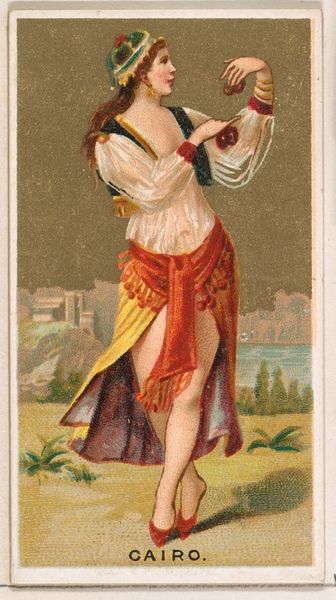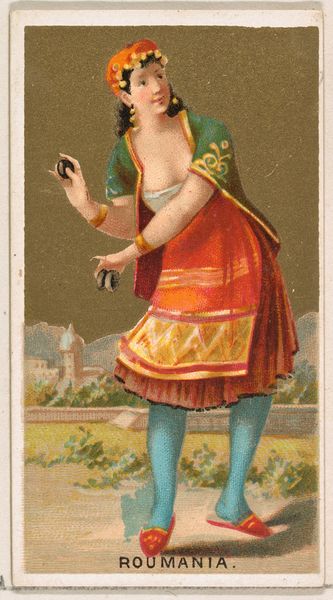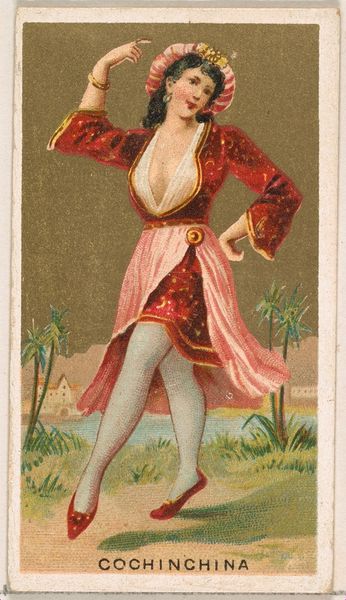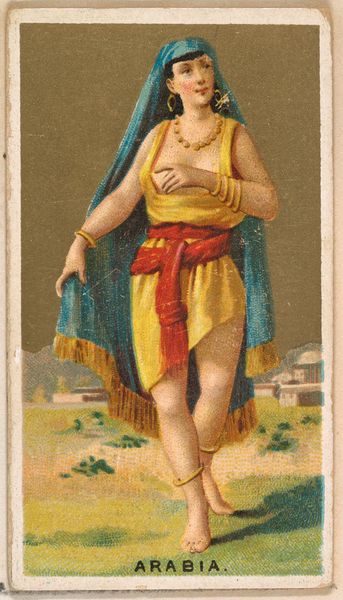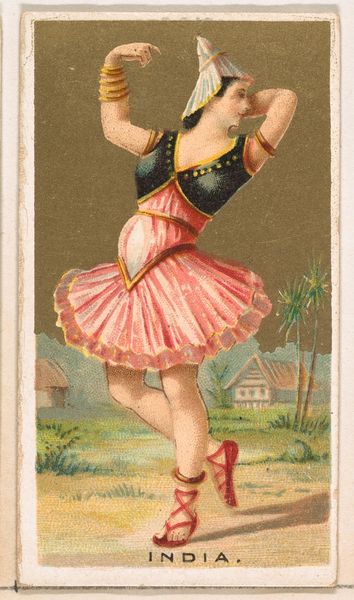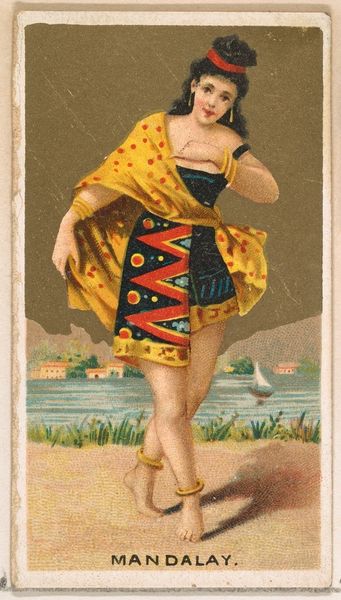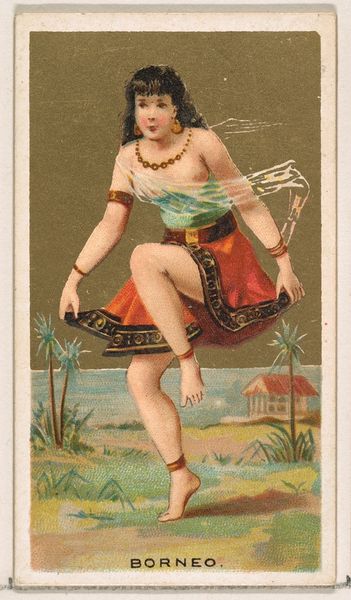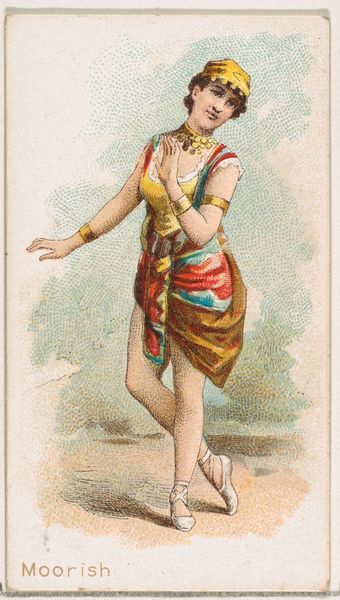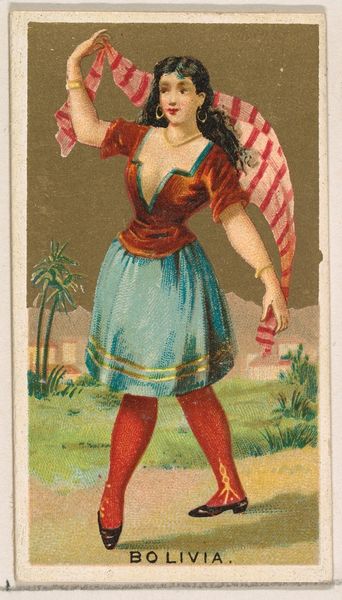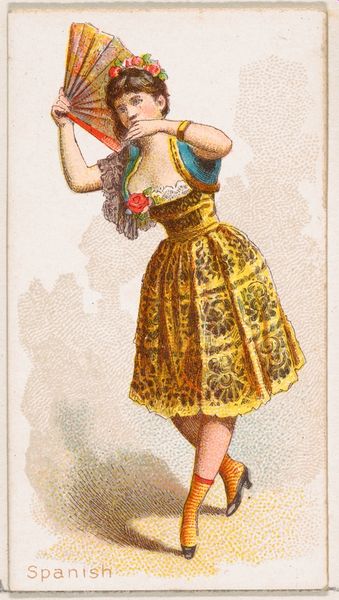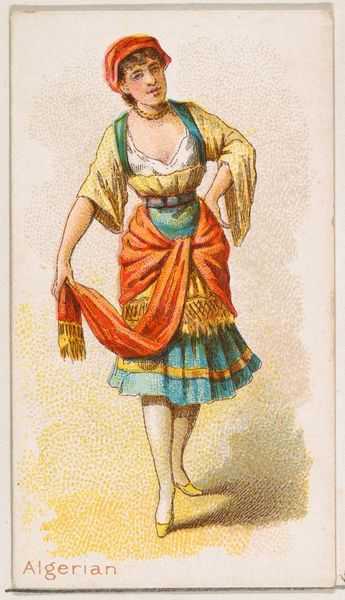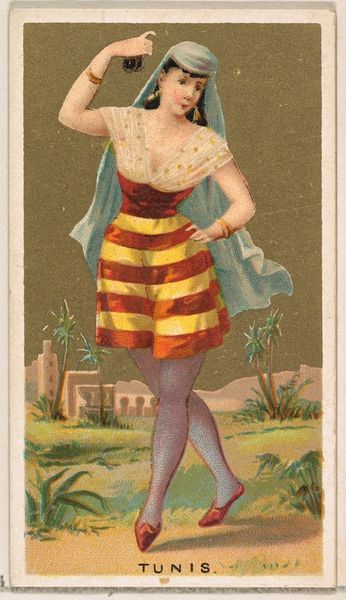
Ganges, from the Dancing Girls of the World series (N185) issued by Wm. S. Kimball & Co. 1889
0:00
0:00
drawing, print, watercolor
#
portrait
#
gouache
#
drawing
#
water colours
# print
#
figuration
#
oil painting
#
watercolor
#
coloured pencil
#
orientalism
#
watercolour illustration
#
genre-painting
Dimensions: Sheet: 2 11/16 × 1 1/2 in. (6.8 × 3.8 cm)
Copyright: Public Domain
Editor: This is "Ganges, from the Dancing Girls of the World series (N185)", published in 1889 by William S. Kimball & Co. It's a small print and at first glance, the figure seems both romantic and slightly... exoticized? What stands out to you as we consider the historical and cultural context? Curator: The "Dancing Girls of the World" series itself immediately raises questions of power and representation. This image, like many from that era, leans heavily into Orientalism. It's not simply a portrait; it's a constructed image of the 'other', filtered through a Western, specifically American, gaze. Editor: So, the figure and the landscape, they're not necessarily "real," but a projection of Western ideas? Curator: Precisely. Consider the title: "Ganges." The name evokes a sacred river, deeply significant in Hinduism, yet it's reduced to a label for a 'dancing girl.' How does that impact your understanding of the image? And what about her attire? Is it accurate, respectful, or more about fantasy and perceived sensuality designed for a Western audience? Editor: I see what you mean. It seems less about authentic representation and more about catering to Western fantasies, almost like a collectible objectifying different cultures. Does that reading align with the context of the time? Curator: Absolutely. Remember, this was the height of colonialism. Images like this played a role in shaping public perception, reinforcing hierarchies, and exoticizing cultures for consumption. Editor: I never thought about trade cards having so much historical weight. Curator: These seemingly innocuous images are often potent carriers of ideology. It’s crucial to unpack the assumptions and power dynamics embedded within them. Examining gender, race, and colonial history brings a richer understanding to visual culture. Editor: Thanks, it's been truly eye-opening to consider all of that. It makes you realize these images are so much more than just what appears on the surface. Curator: Exactly. Looking closer at seemingly simple art can help reveal more complex and unsettling histories.
Comments
No comments
Be the first to comment and join the conversation on the ultimate creative platform.
